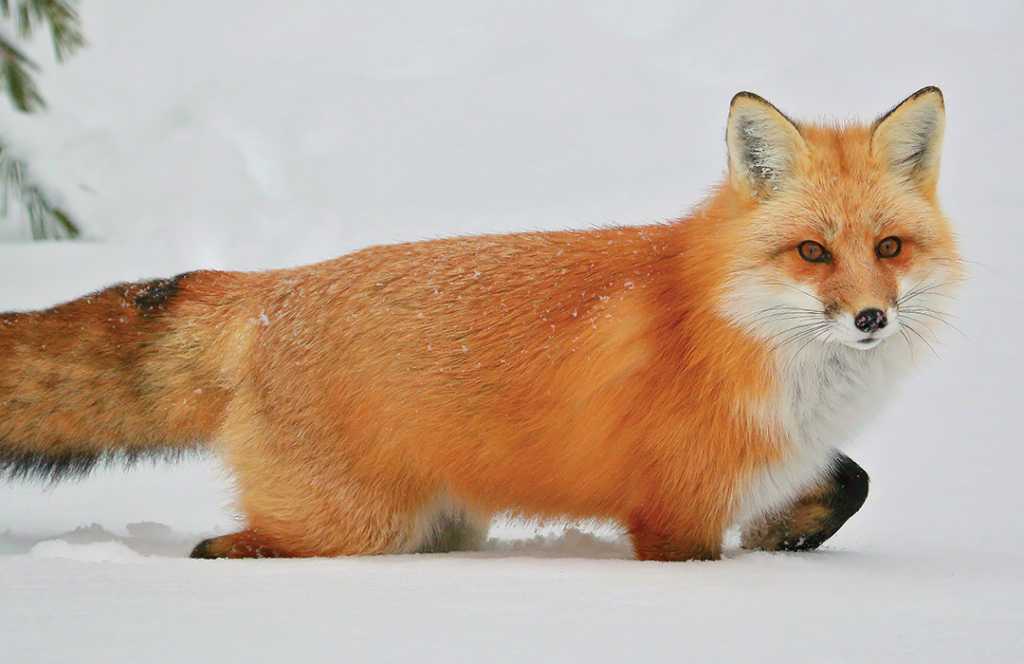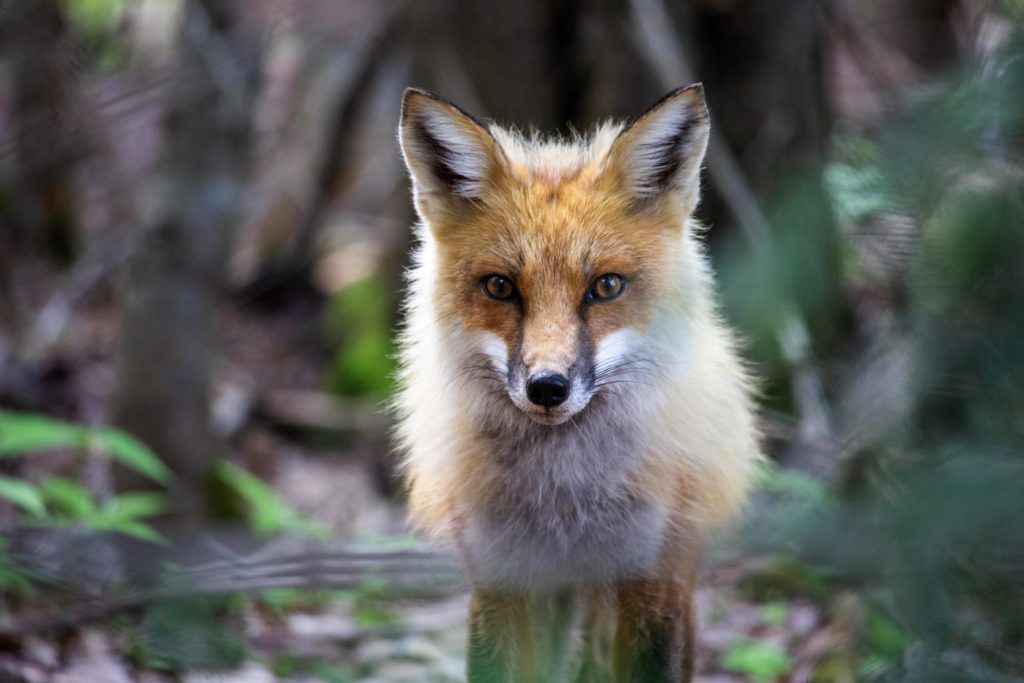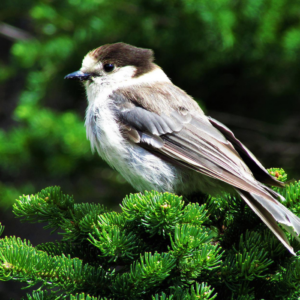The Timid and Curious Red Fox
The Canadian red fox typically weighs from 3.6 to 6.8 kg and has the appearance of a small dog. These mammals have an average lifespan of 3 to 6 years old and tend to be diligent and nurturing parents. Kits will often practice hunting under adult supervision and leave the den site alone once capable of feeding independently, usually at about three months of age.
Red foxes are also great hunters. Although their usual prey consists of some seriously fast critters (including rabbits, squirrels, and mice), their acute eyesight and incredible sense of smell and hearing allow them to detect the slightest movements. But their diet doesn’t consist solely of meat; red foxes like to eat plants, fruits, insects, and berries, particularly during the summer months.
Did you know?
Red foxes are found in all of Canada’s provinces and territories, making them one of the most widespread mammals in the country. Contrary to their name, red foxes actually come in all colours, varying from brown to silver and black.
Red foxes tend to be timid animals. They are often described as nervous and prefer remaining hidden, but they are still curious animals that love to explore.

Where are they found?
Being one of the most widespread mammals, red foxes are found everywhere except in unwelcoming landscapes for the species like the high arctic and the islands off the coast of B.C. Instead, woodland edges, farmlands and prairies seem to be some of their favourite spots for habitation.
Contrary to popular belief, foxes only use dens when breeding. It’s very typical to find a fox asleep in the open, but this doesn’t mean you’ll find a red fox anywhere at any time of the day. Although they venture out occasionally during the daytime, red foxes are nocturnal.

Foxes Throughout Time
Red foxes have a history of being treated as pests in North America because of their infamous reputation of being chicken thieves. In the past, hunting bounties have been used to cull their population. Over time, the red fox has been recognized as a valuable part of the ecosystem—often hunting small crop-destroying critters and insects to farmers’ benefit.
But foxes can also be prey. Wolves, coyotes, and even dogs will sometimes chase and kill foxes when the opportunity arises. In some cases, red foxes are victims of interspecific strife and forced outside their territory when overpowered for resources by competing species. It’s one of the main reasons why you might find a fox close to human habitation.
During the winter, red foxes are also vulnerable to fur trapping—especially for silver foxes, who are black with white-tipped guard hairs. Silver foxes are greatly valued by the fur trade and were bred in captivity back when fox fur clothing was popular.
Are you looking to learn more about nature? Subscribe for email updates to receive frequent updates about conservation and what you can do to help animals in Canada.



